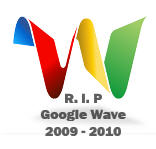One of the first adding machines was created in the mid-1600s. It took another two centuries before they were common in the workplace. Did adding up figures suddenly become more difficult or error-prone after two centuries? What exactly about numbers changed in the late 1800’s to make this new technology so suddenly appealing?
Of course the answer is that it was us who changed, not the fundamentals of math. To say we changed slowly is an understatement — in spite of the major economic improvements and workplace enhancements that came from their adoption.
 It’s hard to imaging myself being one of those poor office clerks who added figures in his head all day, back in the so-called Age of Enlightenment. What I can be pretty sure of is this: A machine that does adding for you must have initially seemed far-fetched; even comical. How on earth could a machine do the work of the human brain? There must be some sort of catch.
It’s hard to imaging myself being one of those poor office clerks who added figures in his head all day, back in the so-called Age of Enlightenment. What I can be pretty sure of is this: A machine that does adding for you must have initially seemed far-fetched; even comical. How on earth could a machine do the work of the human brain? There must be some sort of catch.
Of course you know where I’m going with this.
Many writers of obituaries for the soon-to-be-euthanized Google Wave have said it was a slick solution lacking a problem. It therefore died of neglect.
I agree that it lacked a critical mass of users, but I disagree with the “lack of problem” assertion. Google Wave did real work, and it did it in a way that was flawed but thrilling for the vast potential it represented. At least, it thrilled me.
Ever since the mid-1990s, when I read the book of a very young Michael Schrage, No More Teams!: Mastering the Dynamics of Creative Collaboration, I realized that there were many barriers to good workplace collaboration. Chief among them was technology. Especially back then, personal computers were isolating machines. They forced us to relate with a small screen and a single keyword.
One of his observations was that before we could take the next incremental leap in teamwork, we needed a revolution in the technology that supports us. Of course he was right, but his pronouncement overlooked another barrier: We might be handed the technology we need to collaborate in a networked age and its environment so unfamiliar that it is almost universally rejected.
A year ago I predicted that we would be working within something like Google Wave “in two years.” I seem to have missed in that number by a factoring error of 10 — maybe even 100.
That would put adoption of the Wave at 200 years from now. In the meantime, I guess we all continue to add up columns by hand and grouse about our dreary workaday lives.